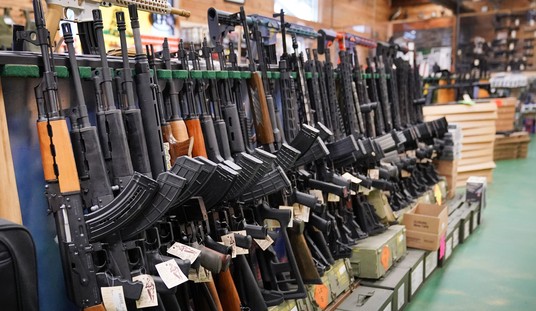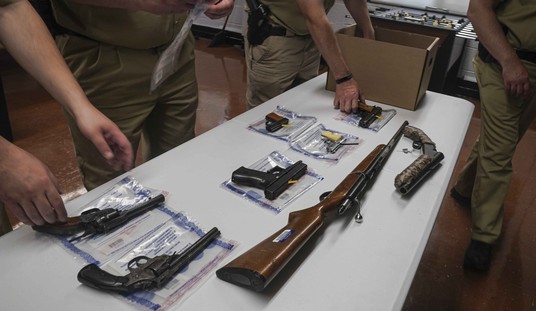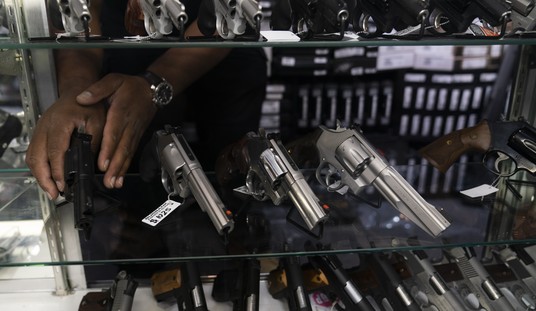Minnesota Second Amendment activists aren’t giving up or giving in after a Democrat-controlled conference committee in the state legislature adopted a “red flag” measure and a “universal background check” provision as part of an omnibus public safety bill on Wednesday. On today’s Bearing Arms’ Cam & Co we’re talking with Rob Doar from the MN Gun Owners Caucus about the devils in the details of the legislation and the shady moves by Democrats to tie their anti-gun measures into a spending bill that funds correctional officers, courts, and public defenders; in essence daring legislators to vote against legitimate public safety measures if they want to protect the right of the people to defend themselves.
While some Democrats who initially expressed reservations about the gun control measures claimed that they’d found a “compromise”, Doar says what was approved by a conference committee with no debate or discussion (and just 14 minutes after the legislation was made available for the public to look at) is virtually identical to the proposals that gun owners have objected to all along.
The “red flag” provision, for instance, is still lacking basic due process protections like a court-appointed attorney for those who can’t afford one, and it still allows for ex parte hearings where the subject of the petition is not allowed to present a defense (or is even aware that a hearing is taking place). Doar also informed us that while Minnesota lawmakers have passed legislation banning “no-knock” raids, there’s nothing in the “red flag” language that bars law enforcement from engaging in that practice when it comes to “temporarily” confiscating firearms. That’s not only a glaring bit of hypocrisy on the part of lawmakers, but something that could very well put both police and the subject of any Extreme Risk Protection Order at risk.
Doar believes the background check measure is also fundamentally flawed. As written, all transfers of firearms, even a temporary loan, must either go through a federal firearms licensee or a local police department, which would issue a “permit to purchase” for the transferee. As Doar explains, Democrats have touted this as a way for rural gun owners to avoid having to travel several hours to their nearest gun store to conduct the transfer, but gives departments up to 30 days to issue the permit. So much for convenience, right? And since there are only limited exemptions for temporary transfers, if a rural resident loans a buddy a rifle to use during deer season, not only will the recipient of the rifle have to acquire a permit-to-purchase, but the original owner of the gun will have to do so as well when it comes time to get their gun back.
These restrictions on law-abiding gun owners will be soundly ignored by the growing number of violent criminals in Minnesota, particularly in the Twin Cities area.
In 2020, violent crime—homicide, rape, aggravated assault, and robbery, which includes carjackings—increased statewide by 16.6% over the previous year, as reported by Minnesota police in the Uniform Crime Report. Murders alone jumped 58.1%, from 117 in 2019 to a record 185 in 2020. Violent crime continued to rise at an alarming rate in 2021, jumping another 21.6% over 2020. The murder rate statewide rose to another record level, 201, in 2021. In the seven-county metro area of Anoka, Carver, Dakota, Hennepin, Ramsey, Scott, and Washington counties, violent crime incidents rose at a slightly higher pace, 23.9% in 2021 over 2020.
Nationwide, violent crime has increased since early 2020. But Minnesota has seen the steepest spike in gun violence of any state, according to a 2021 study published by Scientific Reports with data from the nonprofit Gun Violence Archive. Perhaps not surprisingly, the Minnesota city with the highest rate of violent crime is Minneapolis, the most populated city and a place of unrest and police depletion following George Floyd’s murder by Minneapolis police on May 25, 2020. The rise in murders and shootings citywide was especially unsettling. Minneapolis’ homicide increase was one of the highest in the country, more than doubling from 46 in 2019 to 93 in 2021, per Uniform Crime Reports. Through the first half of 2022, the number of murders in Minneapolis ranked in the top quarter percentile of cities per capita nationwide (19th of 70), according to the Major Cities Chiefs Association. Meanwhile, across the river in St. Paul, 2021’s homicide count of 38 pushed past the capital’s previous peak of 33, set in 1992, placing 2021’s homicide count slightly higher when figured per capita: 12.4 versus 12.2 per 100,000 people.
Minnesotans are rightfully concerned about the rise in crime, but if they believe that the gun control measures included in the public safety package are going to turn things around they’re in for a painful surprise and a huge letdown. As Doar tells Bearing Arms, it will be law-abiding gun owners who bear the brunt of these policies… at least if they’re enacted into law.
Doar and the MN Gun Owners Caucus are urging Minnesota gun owners to contact three DFL senators who’ve previously expressed reservations about these gun control measures, though at least two of them have said in the past 24 hours that they’re now on board.
Senator Judy Seeberger (41, DFL) 651-297-8060
Senator Rob Kupec (04, DFL) 651-296-3205
Senator Grant Hauschild (03, DFL) 651-296-1789
Doar believes there’s still a chance to defeat the omnibus public safety bill, but if the DFL manages to ram the bill through on a party-line vote we’ll be having him back on to discuss the inevitable legal challenge to come.









Join the conversation as a VIP Member